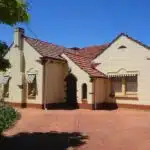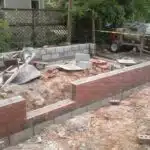A pea gravel patio is a beautiful and affordable addition to any outdoor space. It offers a natural, rustic look that can complement any garden or landscape design. The process of building a pea gravel patio may seem daunting, but with proper planning and execution, anyone can create their own stunning outdoor oasis.
Before beginning the project, it is important to consider the layout and size of the patio as well as the materials needed. Planning ahead will ensure that you have all of the necessary tools and supplies to complete the job efficiently and effectively. This article will provide step-by-step instructions on how to build a pea gravel patio, including tips on selecting materials, preparing the site, laying the gravel, and maintaining your new outdoor space. By following these guidelines, you can create a beautiful and functional area for entertaining guests or simply enjoying some time outdoors.
Assessing Your Outdoor Space
To build a pea gravel patio, the first step is to assess your outdoor space. This means considering both the size and shape of your area, as well as any existing features that you may want to incorporate into your design. Maximizing functionality should be at the forefront of your mind during this process.
Take note of any natural elements that could add to the aesthetic appeal of your patio. Trees, shrubs, and other foliage can create a natural border around your new feature. You might also consider including any unique architectural or landscaping features that already exist on your property, such as retaining walls or garden beds. These elements can provide a sense of cohesion between different areas of your yard.
Incorporating existing features can also help reduce costs associated with building a new patio from scratch. Consider how these elements may impact the overall layout and design, as well as any specific requirements for installing pea gravel in these spaces. By taking an inventory of what you have to work with, you will be able to better plan out the rest of the project and ensure that every aspect is cohesive with the vision you have in mind for your outdoor space. With this in mind, let’s move on to choosing the right pea gravel for your project.
Choosing The Right Pea Gravel
Assessing Your Outdoor Space was the initial step in building a pea gravel patio. Now that you have an idea of your outdoor space, it’s time to choose the right pea gravel. Pea gravel is an excellent option for patios due to its affordability and low-maintenance feature.
Pea gravel comes in different colors, including gray, beige, brown, and white. This variety of colors allows you to select one that matches your desired aesthetic. Moreover, pea gravel also varies in texture, from smooth to rough surfaces. The choice of texture depends on what purpose your patio will serve.
When choosing the right pea gravel for your patio, consider the color and texture that best suits your needs. The next step is calculating materials needed for your patio construction project.
Calculating Materials Needed
Accurately estimating the area size of a pea gravel patio is essential in order to calculate the quantity of pea gravel needed. The amount of pea gravel to be purchased should be based on the size of the patio area, the depth of the gravel, and the type of pea gravel being used. Knowing the dimensions of the patio area is the first step towards accurately calculating the quantity of pea gravel needed. To determine the depth of pea gravel needed, it is important to consider the amount of compaction necessary for the specific application.
Estimating Area Size
Calculating costs for a pea gravel patio project can be daunting, especially when you are unsure about the materials needed. One of the essential factors in determining the amount of material required is measuring the area size accurately. You want to ensure that you have enough materials to cover your space without spending more than necessary. To calculate the area, measure the length and width of your patio, then multiply them to get the total square footage. For irregular areas, break them down into smaller sections and measure each section separately.
Measuring irregular areas may seem complicated at first but an experienced landscaper can help you with this task. A professional will know how to identify different shapes within a specific area and measure them appropriately. In some cases, they might use advanced tools such as GPS or drones to get precise measurements. With their expertise, they can create a detailed plan that includes all the required materials and their quantities.
In conclusion, estimating area size is crucial when calculating costs and determining the amount of materials needed for your pea gravel patio project. By measuring your space correctly and breaking down any irregular areas into smaller sections, you can avoid overestimating or underestimating your needs. If you’re not confident in doing it yourself, consider hiring a landscaping specialist who can help you with this task effectively. They will provide you with accurate measurements and a comprehensive plan that ensures your project is completed smoothly and efficiently without any additional expenses.
Calculating Pea Gravel Quantity
When it comes to building a pea gravel patio, calculating the materials needed goes beyond measuring the area size. The amount of pea gravel required is another crucial factor that can affect your project’s cost and outcome. Pea gravel comes in different sizes, shapes, and colors, making it an excellent choice for various landscaping projects. Before selecting your preferred color options, you should consider the quantity required to cover the entire area. This way, you can avoid purchasing too little or too much pea gravel.
Calculating pea gravel quantity involves determining the depth of coverage and converting it into cubic yards. A standard depth for a pea gravel patio is about two to three inches. You will need to measure the length, width, and depth of your patio area and calculate its total cubic feet. From there, divide this number by 27 (the number of cubic feet in a cubic yard) to determine how many cubic yards of pea gravel you need. If you’re unsure about how much pea gravel your project requires or want cost-effective pea gravel alternatives, consulting with a landscaping specialist can help.
A garden design expert can provide valuable insights on estimating pea gravel quantity based on their years of experience and knowledge in this field. They can also recommend alternative materials that are more cost-effective than regular pea gravel without compromising quality or aesthetics. For instance, crushed stone or decomposed granite is an excellent substitute for those who want a similar look but at a lower price point. With proper guidance from an expert in landscaping design, you can calculate the right amount of materials needed for your project while keeping costs within your budget range.
Preparing The Site
To start building your pea gravel patio, it is important to prepare the site. The first step in site preparation is measuring the space where you want to build the patio. This will give you an idea of how much material you need, as well as help you plan the layout of your patio. Measure the length and width of the area using a measuring tape or a laser level. Make sure to double-check your measurements before proceeding with any other steps.
Once you have measured the space, it’s time to clear debris from the area where you want to install your pea gravel patio. You don’t want any existing vegetation or debris getting in the way of creating a smooth and even surface for your patio. Start by removing any large rocks or sticks that may be in the way. Then use a shovel or garden hoe to remove weeds, grass, and other unwanted plants from the area.
After clearing debris from the site, rake and level out any remaining dirt or soil so that it’s evenly distributed throughout the area where you plan on installing your pea gravel patio. This process will ensure that your new patio has a stable base that won’t shift over time due to uneven ground underneath. With these steps completed, we can now move onto marking out our layout for our pea gravel patio without further delay.
Marking The Layout
- Accurately measuring the area to be used for the pea gravel patio is essential for the project’s success.
- Once the measurements have been taken, staking the outline on the ground will provide a clear guide for the next steps.
- Estimating the amount of materials necessary for the project should take into account both the size of the area and the depth of the gravel.
- It is important to ensure that the measurements are as precise as possible, as this will help prevent overestimation of material needs.
- Taking into consideration the desired thickness of the patio, the estimated amount of pea gravel can be accurately calculated.
- Having the proper materials on hand will ensure that the pea gravel patio is built to the desired specifications.
Measuring The Area
When it comes to building a pea gravel patio, measuring the area is crucial in ensuring that you have the correct amount of materials and that your project is completed with accuracy. Measuring accuracy is key as even a small miscalculation can result in significant changes to the final design or extra cost for additional materials. Therefore, it’s important to take your time and use the right equipment for accurate measurements.
To measure your patio area, you will need a tape measure, stakes, and string. Start by marking out the perimeter of the patio using stakes and string. Measure each side of the string carefully, ensuring that they are all equal lengths. After measuring all sides, add them together to get an accurate measurement of the overall area. If your patio is irregularly shaped, divide it into smaller sections and measure each one separately before adding them together.
Accuracy is critical when measuring the area for a pea gravel patio. By using appropriate equipment such as tape measures, stakes and strings, you can ensure that everything lines up correctly while also avoiding any costly mistakes. With proper measuring techniques, you can begin to visualize your dream patio design before beginning construction.
Staking The Outline
Proper planning and preparation are essential when it comes to building a pea gravel patio. One crucial step in the process is marking out the layout of the patio. This involves staking out the outline to ensure that you have an accurate representation of the overall area. Staking serves as a guide for determining where to pour the pea gravel and helps prevent any mistakes during construction.
Staking the outline involves using stakes and string to mark out the perimeter of your patio area. Start by placing stakes at each corner of your patio, then use string to connect them. Once you have marked out all four corners, double-check your measurements to ensure that they are accurate. If necessary, make any adjustments before moving on.
When it comes to marking out your layout, keep in mind that there are several decorative options available for enhancing the appearance of your pea gravel patio. For example, you may want to include features such as pavers or stepping stones to create a unique design. For those who prefer a professional installation, consider hiring a landscaping specialist or garden design expert who can help bring your vision to life while also ensuring that everything is done correctly from start to finish.
Estimating Materials
After marking the layout of your pea gravel patio, the next step is to estimate the materials you will need. This includes not only the amount of pea gravel required but also any additional materials such as landscape fabric, edging, and tools. Cost considerations are an essential aspect to keep in mind when estimating materials. DIY projects tend to be more cost-efficient than hiring a professional, but it is important to ensure that all necessary equipment is available before starting the project.
The first step in estimating materials is determining the size of your patio. Once you have an accurate measurement of the area, you can use online calculators or consult with a landscaping specialist to determine how much pea gravel will be needed. Other factors to consider when estimating materials include whether or not you will be adding a layer of landscape fabric underneath the pea gravel and what types of edging or borders will be used. These factors can impact both cost and time requirements.
It is important to note that while DIY projects may seem more cost-effective upfront, there may be hidden costs associated with them in terms of time and effort required. Hiring a professional can ensure that everything is done correctly from start to finish, saving you time and potentially money in the long run. Ultimately, it comes down to personal preference and weighing the benefits versus costs for each option before making a decision on whether to go for a DIY approach or hire a professional landscaper.
Excavating The Area
Before laying down any materials, you need to excavate the area. This involves removing the top layer of grass or soil to create a level surface for your patio. One interesting statistic is that for every 100 square feet of patio space, you will need to remove at least 3 inches of soil depth. This means that for a standard 10×10 foot patio, you will need to excavate approximately 1.25 cubic yards of material.
To begin excavation, you’ll need some essential equipment, such as shovels and wheelbarrows. You may also want to consider renting a skid steer loader if you have a large area to excavate. Safety precautions are important during this step of the process as well. Be sure to wear sturdy work gloves and boots with good traction to avoid slipping or injuring yourself while digging.
Once you’ve completed excavation, it’s time to move on to adding a base layer. This is an important step in ensuring that your pea gravel patio is level and stable enough for long-term use. By following these steps carefully and taking safety precautions along the way, you’ll be well on your way to creating a beautiful and functional outdoor space for your home or business.
Adding A Base Layer
A well-built patio requires a strong foundation, which is why adding a base layer is an essential step in building a pea gravel patio. The benefits of having a base layer are numerous. It helps to prevent the gravel from sinking into the soil and ensures an even surface for your patio. Moreover, it provides stability and durability to your patio, making it more robust against weathering.
When it comes to choosing the right material for your base layer, there are several types of base materials available. One option is using crushed stone or sand as a base material. Crushed stone has sharp edges that interlock together, creating a stable surface for the pea gravel to sit on top of. Sand can also be used as a base material but requires careful installation and proper compaction to ensure its stability over time.
Another option for a base layer is using landscape fabric or geotextile fabric. This type of material acts as a barrier between the soil and pea gravel, preventing weed growth while allowing water drainage through the fabric. Using this type of fabric eliminates the need for additional materials like crushed stone or sand.
Incorporating a sturdy and reliable base layer is crucial in ensuring that your pea gravel patio stays level and functional for years to come. In the next section, we will discuss how installing edging can provide further structure and support to your patio’s layout.
Installing Edging
As you plan to build a pea gravel patio, the next crucial step is to install edging. Edging serves as a barrier that keeps your pea gravel from spreading into unwanted areas of your garden or lawn. There are different types of edging materials that you can use for your project, each with its own unique benefits and drawbacks.
One of the most popular types of edging material is plastic. Plastic edging is affordable, easy to install, and flexible enough to fit any landscape shape. However, it may not be as durable as other materials and can become brittle over time when exposed to extreme temperatures.
For a more natural look, stone edging is an excellent option. It offers durability and can withstand harsh weather conditions without cracking or breaking apart. Stone edging also blends in seamlessly with the environment and gives your garden a timeless appeal. However, it tends to be more expensive than other materials, making it less accessible for those on a tight budget.
In summary, choosing the right type of edging material depends on your personal preferences and specific needs for your pea gravel patio project. By weighing the pros and cons of each type of material carefully, you can make an informed decision that will ensure both functionality and aesthetics in your garden space. With your preferred choice of edging installed securely around the perimeter of your patio area, you are now ready to move on to spreading the pea gravel evenly across the surface.
Spreading The Pea Gravel
After installing the edging, it’s time to move on to the next phase of building a pea gravel patio. One of the main benefits of using pea gravel is that it provides excellent drainage for your outdoor space. Unlike other materials, such as concrete or asphalt, pea gravel allows water to seep through and reach the soil beneath, which can help prevent erosion and maintain healthy plants.
When spreading pea gravel, there are different techniques you can use depending on the look and feel you want to achieve. For a more rustic feel, you can spread the gravel unevenly, allowing some areas to be thicker than others. This creates a natural appearance that blends well with surrounding plants and vegetation. Alternatively, if you prefer a more structured look, you can spread the gravel evenly across the entire surface.
To begin spreading pea gravel, start by pouring it onto the surface in small piles. Then use a rake or shovel to distribute it evenly across the area. Be sure to work in small sections at a time so that you can achieve an even coverage throughout. Once all of the pea gravel has been applied, use a compactor or tamper tool to press down on it and create an even surface with no loose rocks or stones.
Transition: Now that your pea gravel has been properly spread out over your patio area, it’s important to ensure that the surface is level before moving forward with any additional steps.
Leveling The Surface
The next step in building a perfect pea gravel patio is leveling the surface. This can be done using DIY tools or with professional help. The first thing to consider when leveling a patio is the base. There are two main types of bases: natural and synthetic. Natural bases consist of compacted soil or crushed stone, while synthetic bases are made from materials such as concrete or asphalt.
Before beginning any work on your patio, it’s important to decide which type of base will work best for your needs. If you’re looking for an eco-friendly option, a natural base may be the way to go. However, if you want a more durable and long-lasting option, a synthetic base may be better suited for your needs.
Once you’ve decided on the type of base you want to use, it’s time to start leveling the surface. This involves removing any debris or vegetation that may be present and then using a level to ensure that the surface is flat and even. It’s important to take your time during this process to ensure that your patio is level and stable before moving on to the next step of tamping down the gravel.
Tamping Down The Gravel
After leveling the surface, it’s time to move on to the next step of building a pea gravel patio. Tamping down the gravel is essential to ensure that it stays in place and doesn’t shift over time. This process involves compacting the gravel to create a stable base for the patio.
Tools needed for tamping down the gravel include a hand tamper or plate compactor, both of which can be rented from a home improvement store. Using a hand tamper requires physical effort, but it can be used in smaller areas where a plate compactor may not fit. For larger patios, a plate compactor is more efficient and saves time. Before starting, make sure to wear protective gear such as gloves and earplugs.
Common mistakes when tamping down the gravel include not using enough force or not compacting evenly, resulting in an uneven surface. It’s important to work systematically, starting from one corner and moving methodically across the entire patio. Use firm pressure and repeat until no more movement is felt underfoot. Once finished, check for any low spots or uneven areas and add more gravel as needed before repeating the tamping process.
Adding finishing touches to your pea gravel patio is the final step in creating a beautiful outdoor space. These touches can include edging materials such as bricks or stones to define the boundaries of your patio. Additionally, you may want to consider installing outdoor lighting fixtures or adding potted plants for extra ambiance. With these steps completed, you can enjoy your new pea gravel patio for years to come!
Adding Finishing Touches
Now that your pea gravel patio is complete, it’s time to add some finishing touches to enhance its beauty and functionality. One great way to do this is by incorporating DIY furniture into the design. You can make a simple bench or table using wood pallets, cinder blocks, or even old tires. This will give your patio a personalized touch while providing a comfortable place to sit and relax.
Another way to add character and charm to your pea gravel patio is by using plant decoration. Potted plants, hanging baskets, and window boxes are all great options for adding color and greenery to your outdoor space. Choose plants that thrive in your local climate and require minimal maintenance for best results. You can also incorporate herbs like basil or mint for a fragrant addition to your patio.
Incorporating these finishing touches will help transform your pea gravel patio into an inviting oasis that you’ll love spending time in. By personalizing the space with DIY furniture and adding natural elements like plants, you’ll create an outdoor area that feels like an extension of your home. Next up, we’ll discuss how to maintain your pea gravel patio so that it stays beautiful for years to come.
Maintaining Your Pea Gravel Patio
A pea gravel patio is a beautiful addition to any outdoor space that requires minimal maintenance. However, some basic upkeep will ensure the longevity of your patio. DIY cleaning and repairing techniques are essential for keeping your patio looking pristine. Regular sweeping and raking of the surface will prevent any debris from building up and causing damage.
Weatherproofing solutions can also help protect your pea gravel patio from harsh weather conditions. Sealing the surface with a water-resistant coating will prevent moisture from seeping into the gravel and causing it to displace over time. Additionally, installing an edge restraint system around the perimeter of your patio will keep the gravel contained and prevent erosion.
In summary, maintaining your pea gravel patio involves regular cleaning, protecting it from harsh weather conditions, and addressing any repairs promptly. By implementing these practices, you can enjoy a beautiful and long-lasting outdoor space for years to come. In the next section, we’ll explore some tips for cleaning and repairing your pea gravel patio without compromising its integrity.
Tips For Cleaning And Repairing
After building a pea gravel patio, it is important to maintain it properly in order to enjoy its benefits for years to come. Regular cleaning and repair can help ensure that your pea gravel patio remains in good condition. While you can perform some maintenance tasks yourself through DIY repair, it may be necessary to hire professional cleaning services for a thorough cleaning.
One of the easiest ways to keep your patio clean is by sweeping it regularly with a stiff bristle broom to remove debris such as leaves and twigs. You can also use a leaf blower or garden vacuum cleaner for more efficient cleaning. If your pea gravel patio has any stains, they should be addressed immediately using mild soap and water or vinegar solution. Avoid using harsh chemicals as they may damage the gravel.
Another important aspect of maintaining your pea gravel patio is repairing any damages that may occur over time. This includes filling in any holes or depressions in the gravel surface that may develop due to foot traffic or weather conditions. DIY repairs are possible but they require some skill and patience. Alternatively, you can hire a professional landscaping service provider who has experience repairing pea gravel patios.
- Use a weed barrier underneath the pea gravel surface to prevent weed growth.
- Install proper drainage around the perimeter of the patio area.
- Use edging materials such as bricks or stones around the edges of your patio to prevent the gravel from spreading out.
- Consider adding outdoor furniture such as chairs and tables for relaxation and entertainment.
- Plant some low-maintenance plants around the perimeter of your patio area for added aesthetic appeal.
By following these tips for cleaning and repairing, you can ensure that your pea gravel patio stays beautiful and functional for years to come. With regular maintenance and care, you can enjoy your new outdoor space without worrying about costly repairs or replacements.
Enjoying Your New Outdoor Space
Like a painter’s brush on a blank canvas, building a pea gravel patio allows you to create an outdoor space that is both functional and aesthetically pleasing. Now that your patio is cleaned and repaired, it’s time to start enjoying your new outdoor space. One way to do this is by adding some outdoor furniture.
When it comes to selecting outdoor furniture for your pea gravel patio, consider the style and color of your home’s exterior. Neutral colors like beige, gray, or white are perfect if you want to create a classic look. For a more contemporary feel, go with sleek metal pieces in shades of black or silver. If you’re looking for something more inviting, choose wooden chairs and tables that will blend in with the natural surroundings.
In addition to furniture, there are many landscaping ideas that can enhance the beauty of your new pea gravel patio. Consider adding potted plants along the edges or hanging baskets from overhead structures. You can also create a border around the perimeter of the patio using flowers or shrubs. By incorporating these elements into your design, you’ll not only add visual interest but also help create a sense of privacy and seclusion in your outdoor space.
Conclusion
When it comes to creating a stunning outdoor living space, a pea gravel patio is an affordable and stylish option. By following the steps outlined in this guide, you can create a beautiful and functional patio that will enhance your home’s aesthetic appeal and provide a comfortable area for entertaining guests or relaxing with family.
Remember to carefully assess your outdoor space, choose the right type of pea gravel, calculate the materials needed, prepare the site properly, mark out your layout, add finishing touches like edging and lighting fixtures, and maintain your patio regularly. With these tips in mind, you’ll be able to enjoy your new outdoor oasis for years to come.
For example, imagine a homeowner who has always dreamed of having a backyard oasis where they can escape the stresses of daily life. They decide to build a pea gravel patio but are unsure where to start. After following this guide and creating their dream space complete with comfortable seating areas and lush greenery surrounding them, they sit back with a glass of wine and enjoy their newfound sanctuary as the sun sets behind them. This realization fills them with immense joy as they feel grateful for taking the time and effort to transform their backyard into something truly special.
Image Credits
- “Pea Gravel 2012” by F. D. Richards (featured)

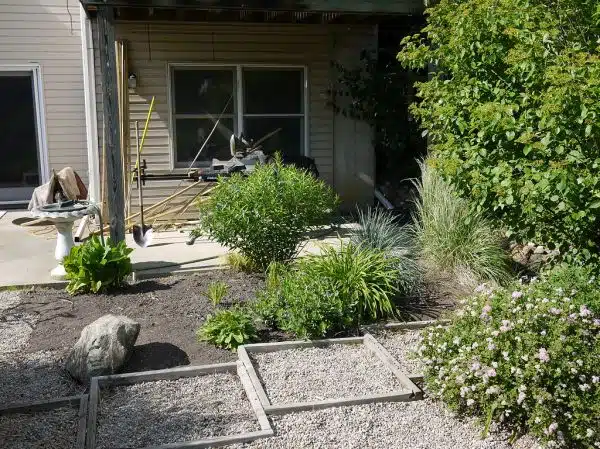
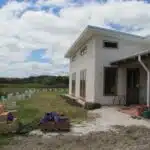
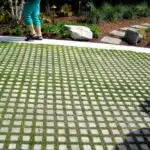

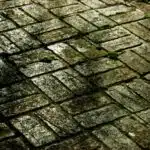
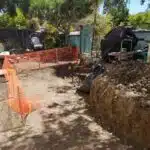


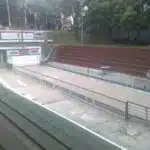
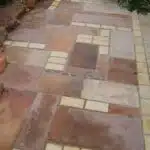
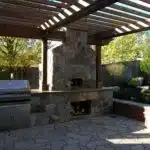
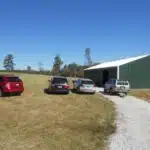
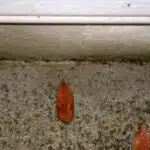

![Calculating How Much Stone Dust You Need 15 [Blog Post]Stone Dust © Oxfam Australia](https://green-life.blog/wp-content/uploads/2023/05/GdZVzgTqPhjq-150x150.jpg.webp)
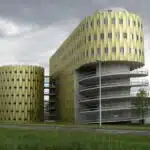


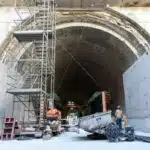


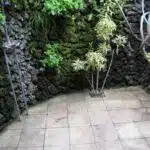
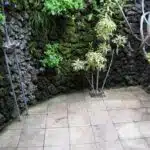

![How To Build A Detached Deck 25 Force Reconnaissance Detachment Deck Shoot [Image 4 of 4]](https://green-life.blog/wp-content/uploads/2023/05/RJo3tlizSGjq-150x150.jpg.webp)
